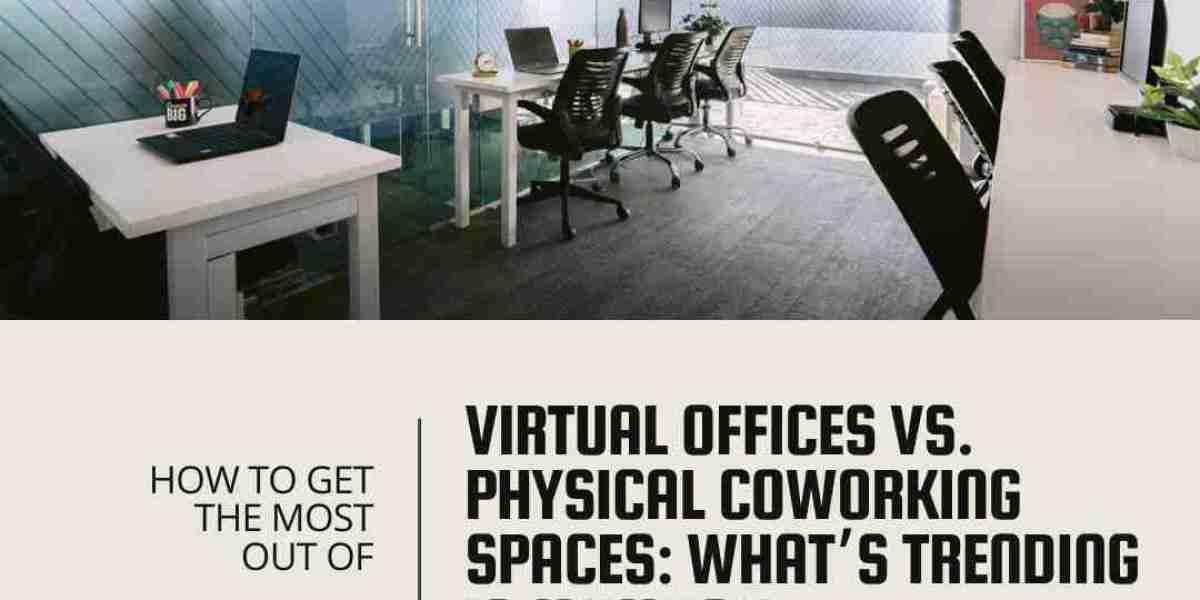The world of work is evolving rapidly, especially in dynamic cities like Mumbai. As more businesses and professionals shift towards flexible work models, the demand for both virtual offices and physical coworking spaces is on the rise. These two options cater to the growing need for flexibility, cost-efficiency, and convenience, making them popular choices for freelancers, startups, and established companies alike.
In Mumbai, a city known for its fast-paced business environment, both virtual offices and coworking spaces have their advantages. However, the question arises: which is better suited for modern professionals and businesses? In this article, we compare the trends of virtual offices and physical coworking spaces in Mumbai, exploring the benefits, drawbacks, and key differences between the two.
The Rise of Virtual Offices in Mumbai
A virtual office offers businesses a professional address and communication services without the need for a physical office space. For many professionals, this concept provides the flexibility to work from anywhere while maintaining the credibility and services that come with having a professional business address in a prime location.
One of the main reasons virtual offices are trending in Mumbai is the high cost of renting or buying office space. For startups and small businesses, particularly those just getting off the ground, renting an expensive office in a city like Mumbai can be prohibitive. A virtual office offers a cost-effective alternative by providing an address in a prestigious business district without the overheads of a physical space.
Virtual offices also appeal to the growing number of freelancers, remote workers, and entrepreneurs who don’t need a full-time workspace but still want the professional services, such as mail handling, meeting rooms, and call answering services, that come with a physical office.
For businesses looking to establish a presence in Mumbai without moving operations entirely, a virtual office is a convenient solution. It allows them to maintain a footprint in the city and access meeting rooms or coworking spaces when needed. In addition, the flexibility of a virtual office means companies can expand or reduce their operations without the constraints of a traditional office lease.
Physical Coworking Spaces: The Growing Trend in Mumbai
While virtual offices offer flexibility, physical coworking spaces are still gaining popularity for a number of reasons. A coworking space in Santacruz, for instance, provides not just a physical location but a vibrant community of professionals from diverse industries. This community aspect is something a virtual office cannot replicate. In coworking spaces, members have access to networking opportunities, workshops, and events that foster collaboration and creativity.
Coworking spaces also offer a professional environment that many remote workers miss when working from home. The separation between home and work is crucial for productivity, and physical coworking spaces provide this distinction. Moreover, the access to office amenities such as high-speed internet, ergonomic furniture, and meeting rooms adds a level of professionalism that freelancers and small businesses value.
Another key factor driving the growth of coworking spaces is the flexibility they offer in terms of membership options. Professionals can choose from a range of plans, including daily, weekly, or monthly memberships, depending on their needs. This flexibility ensures that they only pay for what they use, making coworking spaces an attractive option for budget-conscious entrepreneurs and businesses.
In Mumbai, private coworking space in Santacruz is particularly popular among small teams and startups that need privacy but also want the benefits of a coworking environment. These spaces provide the perfect blend of privacy and community, allowing businesses to enjoy the flexibility of coworking while maintaining a professional image. Private coworking spaces come equipped with modern amenities like meeting rooms, dedicated workstations, and 24/7 access, offering all the benefits of a traditional office without the long-term commitment.
Key Differences Between Virtual Offices and Coworking Spaces
The key difference between virtual offices and coworking spaces lies in the physical presence. Virtual offices offer the services and professionalism of a physical office without the need to actually work from that space, while coworking spaces provide a dedicated area where professionals can come in, work, and collaborate.
Another difference is the sense of community. Coworking spaces foster an environment of collaboration and networking that virtual offices cannot offer. In coworking spaces, members have access to events, seminars, and networking opportunities that are invaluable for business growth and personal development.
Cost is another differentiating factor. Virtual offices are generally more affordable than coworking spaces because they do not require a physical location for everyday work. However, coworking spaces offer the advantage of being able to provide a professional environment whenever needed, as well as additional amenities like high-speed internet, printing services, and meeting rooms.
Pros and Cons of Virtual Offices
Pros:
Cost-Effective: A virtual office allows businesses to have a professional address at a fraction of the cost of renting a physical office space.
Flexibility: Professionals can work from anywhere while still maintaining the credibility of having an office address.
Professional Services: Mail handling, call answering, and access to meeting rooms provide businesses with the services they need without being tied to a physical office.
Cons:
Lack of Community: Virtual offices do not provide the networking opportunities and community that physical coworking spaces offer.
No Physical Workspace: Professionals working from a virtual office will still need to find a place to work, whether from home, a coffee shop, or a coworking space.
Pros and Cons of Physical Coworking Spaces
Pros:
Community and Networking: Coworking spaces foster a sense of community, offering networking events and collaboration opportunities that are essential for business growth.
Professional Environment: Access to office amenities and a professional setting can boost productivity and create a positive work environment.
Flexible Membership Options: Professionals can choose from a variety of membership plans based on their needs and budget.
Cons:
Cost: Coworking spaces can be more expensive than virtual offices, especially for businesses or individuals who do not need a physical space every day.
Limited Privacy: While private coworking spaces offer more privacy, open coworking environments can sometimes be distracting for those who require a quiet, focused space.
What’s Trending in Mumbai?
In Mumbai, both virtual offices and coworking spaces are trending, each catering to different needs within the professional community. The city’s business landscape is diverse, with freelancers, startups, and even established corporations embracing flexible work options. For businesses that need a physical presence but don’t want the costs associated with a traditional office, virtual offices offer a cost-effective solution. However, for professionals who value community, networking, and a productive work environment, coworking space in Mumbai remains the preferred choice.
The trend towards private coworking spaces is also gaining traction, as professionals and small businesses seek the privacy of a traditional office while still enjoying the benefits of a coworking community. Private coworking spaces offer the best of both worlds, providing a quiet and secure workspace along with access to events, workshops, and networking opportunities.
Conclusion
The future of work in Mumbai is being shaped by both virtual offices and physical coworking spaces. Each offers distinct advantages, with virtual offices providing cost-effective flexibility and coworking spaces delivering a collaborative and community-driven environment. For millennials, Gen Z, and businesses of all sizes, the choice between the two will depend on their specific needs, work styles, and preferences.



